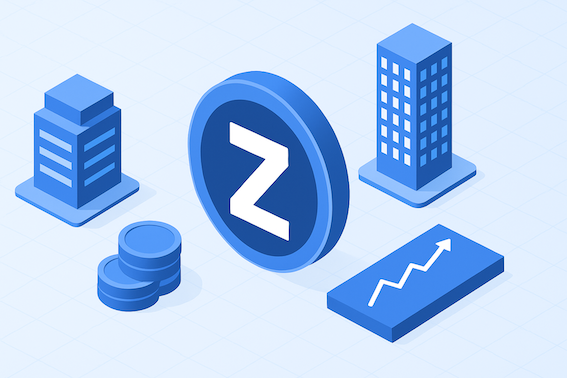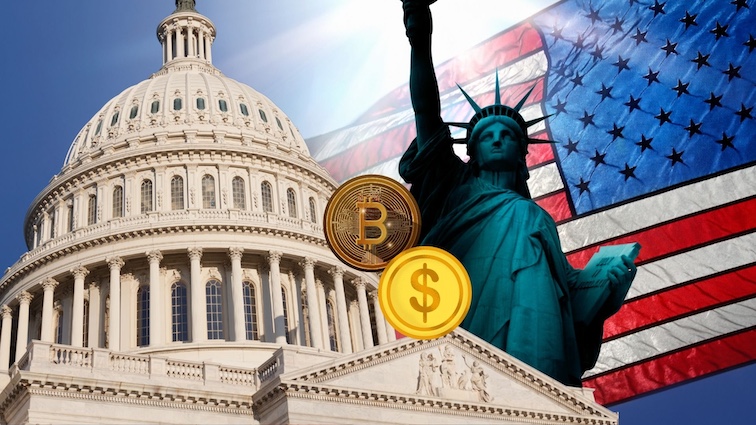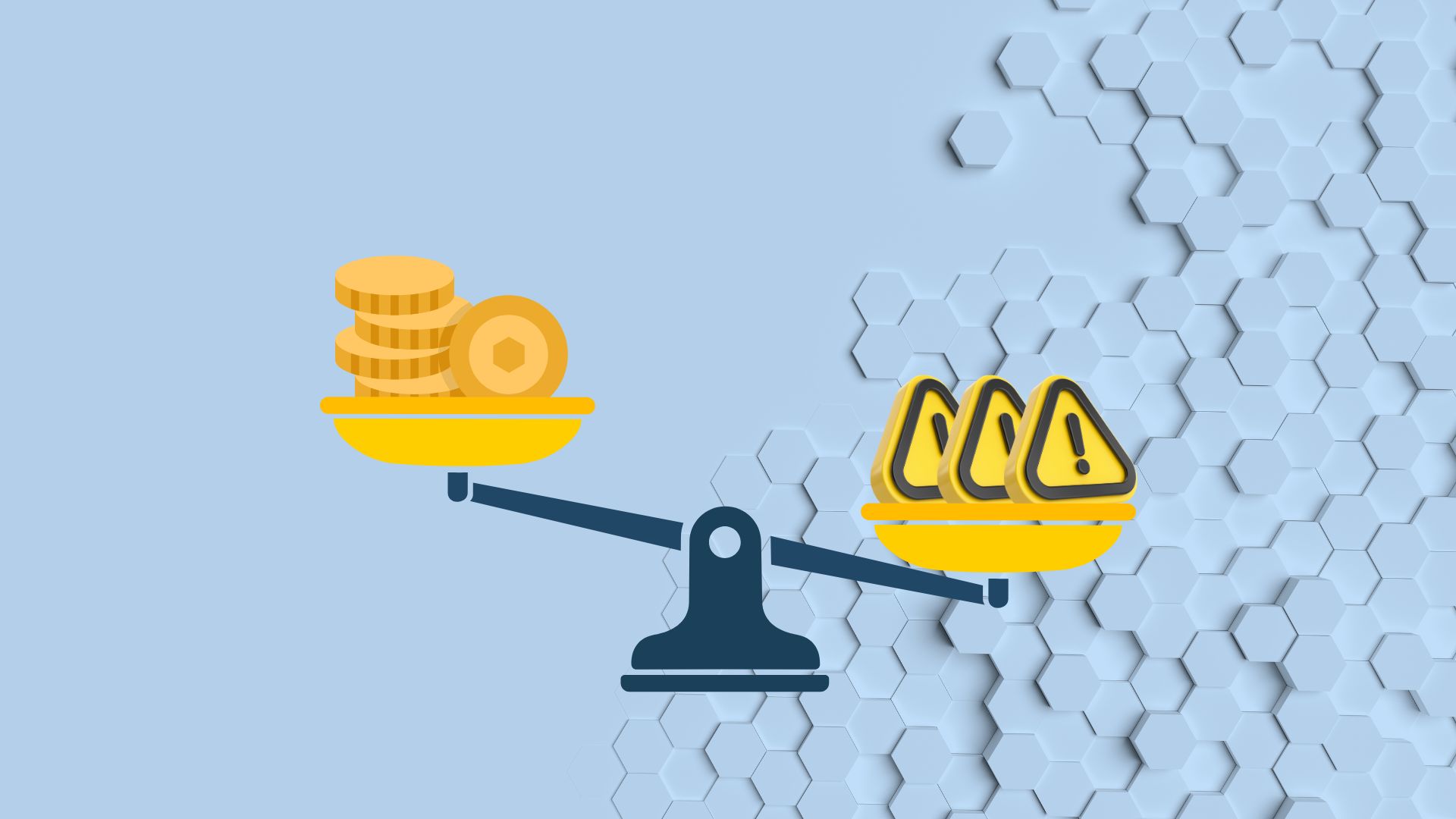Ensuring Global Compliance in Asset Tokenization: A Comprehensive Guide to DyCIST's Multi-Jurisdictional Features
Real-world asset tokenization is gaining continued popularity, transforming finance across the globe, however, compliance with global regulations proves to be a challenge, especially with different regions having varying policies on Anti Money Laundering (AML), Know Your Customer (KYC), and security laws. Navigating this fragmented landscape is essential for token issuers to avoid legal risks, trading restrictions, and financial penalties. Zoniqx’s DyCIST protocol tackles this complexity with a compliance-first architecture, integrating on-chain identity verification, smart contract-driven regulatory enforcement, and decentralized governance to ensure seamless adherence to global regulations. By automating compliance and enabling real-time auditability, DyCIST empowers issuers, investors, and regulators to engage in tokenized markets with transparency, security, and legal certainty, setting a new standard for multi-jurisdictional asset tokenization.
In this article, we discuss how global regulatory challenges are met with DyCIST's compliance-first architecture enabling cross-border secure, legally informed tokenization. Be it a token issuer, investor, or financial institution, understanding how DyCIST navigates regulatory challenges is crucial for staying ahead in the world of DeFi and tokenized assets.
Index
- Introduction
- The Compliance Challenge in Asset Tokenization
- DyCIST’s Compliance-First Approach
- Multi-Jurisdictional Compliance Features of DyCIST
- Dynamic Regulatory Adherence
- On-Chain Identity & KYC Solutions
- Permissioned and Hybrid Token Structures
- Governance and Risk Mitigation
- Regulatory Integration and Auditable Transparency
- Future of Regulatory Compliance in Asset Tokenization
1. Introduction
The Importance of Compliance in Asset Tokenization
Asset tokenization—transforming real-world assets into digital tokens—is reimagining finance by augmenting liquidity, fostering fractional ownership, and lowering transaction costs. As tokenized assets become mainstream, compliance with regulatory frameworks becomes increasingly difficult. Governments and financial institutions across the globe have strict rules to enable the prevention of fraudulent activities, money laundering, and exploitation of investors. Non-compliance, along with increasing the legal risks for businesses, can become a hindrance in the institutional adoption of tokenized assets.
With asset tokenization, compliance poses a challenge due to the decentralized nature of blockchain technology. Unlike traditional financial systems, which are governed within specific regulatory frameworks, tokenized assets are not bound by borders. Tackling this issue requires finding an answer to how tokenized assets can comply with regulations from multiple jurisdictions while still maintaining the efficiency and transparency offered by blockchain technology.
Regulatory Fragmentation and Challenges in Multi-Jurisdictional Compliance
A significant challenge in asset tokenization is regulatory fragmentation, wherein every country approaches classification, taxation, and governance over tokenized assets differently. While some jurisdictions, such as Switzerland and Singapore have clearly defined regulations, others remain vague or overly restrictive. This inconsistency means that businesses have to navigate through a spider web of legal laws, which can often end up in compliance logjams.
Common multi-jurisdictional compliance challenges include:
- AML & KYC Compliance: The AML policies and KYC practices differ from one region to another, meaning that token issuers are required to offer flexible identity verification solutions.
- Securities Classification: While some jurisdictions place tokenized assets into the regulatory category of securities and therefore treat them as heavily-regulated financial instruments, other countries treat them as mere commodities or digital assets.
- Cross-Border Transactions: The mobility of tokenized digital assets across borders means that they have to go through multiple layers of taxation and legal compliance processes.
- Regulatory Uncertainty: Businesses have to be prepared for constantly evolving regulation to avoid facing legal consequences.
Without a compliance-centric framework, token issuers and investors face risks such as fines, asset seizures, and restricted market access.
DyCIST’s Role in Ensuring Compliance Across Borders
DyCIST addresses these compliance challenges by offering a multi-jurisdictional tokenization protocol that integrates compliance automation, governance mechanisms, and regulatory adaptability. Unlike generic tokenization solutions, DyCIST embeds compliance at the protocol level, ensuring that tokenized assets adhere to regulatory requirements without compromising decentralization.
Key compliance-driven features of DyCIST include:
- Smart Contract-Driven Compliance: Automated regulatory adherence through programmable token behavior.
- On-Chain Identity & KYC Solutions: Enabling seamless identity verification while maintaining decentralization.
- Jurisdiction-Specific Permissioning: Token structures that adapt to different regulatory frameworks, ensuring lawful transactions.
- Auditable & Transparent Records: On-chain compliance reporting for regulators and investors.
By integrating these features, DyCIST ensures that asset tokenization remains legally compliant, scalable, and institutionally viable across multiple jurisdictions. As the regulatory landscape continues to evolve, DyCIST provides a robust framework for businesses seeking to tokenize assets without falling into compliance pitfalls.
2. The Compliance Challenge in Asset Tokenization
The process of tokenization is transforming the management, trading, and ownership of real-world assets (RWAs). However, compliance is a major barrier to widespread adoption among institutions. In every jurisdiction, there are set laws that ensure the integrity of finance, protect investors, and mitigate cases of fraud. For companies operating in the asset tokenization space, understanding these regulatory frameworks is of utmost importance.
Key Legal and Regulatory Concerns in Asset Tokenization
Tokenized assets are subject to various compliance requirements depending on their classification and usage. The following legal and regulatory concerns significantly impact tokenization projects:
1. Anti-Money Laundering (AML) & Know Your Customer (KYC) Compliance
International bodies like the Financial Action Task Force (FATF), SEC in the US, and ESMA in the EU have set guidelines to ensure compliance with KYC and AML processes to curb illegal financial activities. These procedures cover tokenized assets as well as traditional financial instruments. The AML/KYC requirements include the following:
- Identity Verification: Token holders are verified through a KYC process to prevent anonymous transactions associated with crimes.
- Transaction Monitoring: Suspicious transactions are tracked with the use of on-chain surveillance.
- Cross-Border AML Compliance: Managing multi-jurisdictional compliance when different AML norms apply.
Neglecting compliance processes could result in heavy penalties, loss of reputation, and in some cases, an organization’s operations could be terminated.
2. Securities Regulations and Asset Classification
A significant aspect of the compliance hurdles that tokenization faces relates to whether or not a particular tokenized asset qualifies as a security. Securities are regulated differently in different jurisdictions:
- Within the United States, an asset is deemed to be a security if it passes the SEC’s “Howey Test”. Once a tokenized asset passes the test, it becomes legally bound to follow the strict laws dealing with disclosure policies as well as policies on investor protection.
- In the European Union, tokenized financial instruments are governed by the Markets in Crypto-Assets Regulation (MiCA).
- Some countries have been more advanced with regulations. For example, Singapore, Switzerland, and the UAE have created clear guidelines on the classification of tokens, accompanied by regulatory sandboxes.
Projects that fail to properly classify their tokens risk regulatory action, trading restrictions, and investor litigation.
3. Taxation and Cross-Border Regulatory Compliance
Tokenized assets often move across borders, triggering multiple layers of tax obligations and regulatory scrutiny.
- Different countries impose capital gains taxes, VAT, or withholding taxes on digital asset transactions.
- Cross-border token transactions can lead to double taxation risks if not structured correctly.
- Varying regulatory requirements create barriers to global liquidity, forcing businesses to operate within specific jurisdictions.
Without a standardized compliance framework, businesses struggle to seamlessly execute cross-border token transactions while staying legally compliant.
Jurisdictional Variations and Their Impact on Tokenized Assets
The regulatory landscape for asset tokenization is highly fragmented. Some countries actively support and regulate tokenized assets, while others impose strict restrictions or operate in a gray area.

These jurisdictional variations create complex compliance challenges, as tokenized assets must adapt to different legal frameworks depending on where they are issued, traded, or held.
Need for a Framework That Adapts to Global Regulations
In light of the current regulatory fragmentation, businesses require a tokenization framework that can dynamically adapt to comply with the requirements of various jurisdictions. A compliance-centric solution should offer:
- Regulatory-Aware Smart Contracts: The token logic must implement compliance control for every jurisdiction independently.
- On-Chain Identity Verification: Automatic AML/KYC compliance that meets regional requirements.
- Jurisdiction-Based Permissioning: Functionality of tokens must change based on the legal requirements specific to the region.
- Automated Compliance Reporting: Compliance that is transparent and immutable for regulators and investors.
How DyCIST Solves This Challenge
DyCIST provides a multi-jurisdictional compliance framework that allows businesses to tokenize assets without regulatory friction. By embedding compliance at the protocol level, DyCIST ensures that tokenized assets can:
✔ Adapt to different regulatory classifications (securities, commodities, digital assets, etc.)
✔ Seamlessly integrate with AML/KYC identity verification
✔ Enable cross-border transactions while maintaining full legal compliance
As regulations continue to evolve, businesses must adopt dynamic and adaptable compliance solutions like DyCIST to unlock the full potential of asset tokenization while mitigating regulatory risks.
3. DyCIST’s Compliance-First Approach
Achieving compliance in asset tokenization requires a flexible, yet enforceable, framework across multiple jurisdictions. Automation alongside regulatory adherence in the DyCIST ecosystem is achieved through its decentralized governance and automated compliance mechanisms, allowing for more efficient regulatory processing.
DyCIST’s Architecture for Regulatory Adherence
Unlike traditional tokenization platforms that rely on external compliance solutions, DyCIST integrates regulatory enforcement at the protocol level. Key architectural features include:
- Smart Contract-Driven Compliance: Tokens are subject to jurisdictional rules, allowing for automated compliance with KYC, AML, and other securities legislation.
- On-Chain Identity Verification: Only registered investors can trade particular tokenized assets, greatly reducing the risk of regulatory breaches.
- Jurisdiction-Based Asset Control: Tokens have the ability to apply region specific controls such as limits on transfers, or investor eligibility, in real time based on compliance requirements.
This architecture minimizes manual regulatory intervention, ensuring that compliance is seamlessly maintained without disrupting liquidity or decentralization.
Decentralized Governance in Compliance Enforcement
DyCIST employs a decentralized governance model to maintain regulatory compliance dynamically. Instead of relying on a centralized authority, governance is handled by a network of stakeholders, including token issuers, legal experts, and compliance auditors.
- Automated Compliance Adjustments: Changes enacted through governance proposals are executed by smart contracts through all necessary modifications in token rules and transaction allowances.
- Auditable & Transparent Decision-Making: Every compliance-related governance action is recorded on-chain, providing regulators and investors with full transparency.
This self-regulating model ensures that DyCIST remains adaptable to legal changes without centralized bottlenecks.
Integration of Regulatory Mechanisms within the DyCIST Protocol
DyCIST’s compliance-centric protocol integrates multiple regulatory safeguards to facilitate secure and lawful asset tokenization:
✔ Dynamic Compliance Layer: Adjusts token permissions based on jurisdictional requirements.
✔ Automated KYC/AML Verification: Enforces identity checks at both issuance and secondary trading levels.
✔ Cross-Border Compliance Bridge: Ensures that assets traded internationally comply with regional laws before execution.
✔ Regulatory Reporting Module: Provides real-time compliance reporting for financial regulators and institutions.
By embedding these mechanisms directly into the protocol, DyCIST offers a scalable, regulation-friendly tokenization ecosystem that eliminates compliance friction and fosters institutional adoption.
4. Multi-Jurisdictional Compliance Features of DyCIST
The diverse regulatory frameworks in various regions of the world create significant obstacles for ensuring compliance in asset tokenization. DyCIST addresses this challenge through automated KYC/AML procedures, dynamic regulatory adherence, and customizable token structures, ensuring seamless cross-border compliance while maintaining decentralization and efficiency.
Dynamic Regulatory Adherence
Traditional compliance models struggle with frequent regulatory updates and regional variations. DyCIST overcomes these issues by integrating smart contract-driven automation that ensures asset tokenization aligns with evolving legal requirements.
- Smart Contract-Driven Compliance Automation: DyCIST embeds jurisdiction-specific compliance rules directly into smart contracts. These rules dictate who can hold, transfer, or trade an asset based on real-time legal considerations.
- Automated Enforcement of Legal Changes: Unlike static compliance frameworks, DyCIST’s upgradable smart contracts adjust to new regulations without requiring manual intervention. This ensures assets remain compliant even as governments introduce new policies.
- Geofencing & Transaction Controls: DyCIST enables automated geographic restrictions on token transfers, ensuring that assets are only accessible to approved investors in compliance with local laws.
By automating compliance enforcement, DyCIST minimizes regulatory risks while allowing token issuers to expand into new markets with confidence.
On-Chain Identity & KYC Solutions
As with any global compliance requirement, identity verification is needed to mitigate fraud, money laundering, and illegal access. DyCIST adopts a decentralized identity and KYC approach to ensure that tokenized assets remain legally accessible across jurisdictions.
- Enforcing KYC/AML Compliance Across Jurisdictions: DyCIST requires identity verification for issuance, transfers, and secondary market trading to prevent regulatory breaches at different levels. It supports region-specific KYC providers, ensuring compatibility with varying legal frameworks.
- Decentralized Identity Verification Mechanisms: Rather than relying on centralized databases, DyCIST uses self-sovereign identity (SSI) systems where users own and control their identity documents. Compliance with regulations can be achieved without exposing private information to risk.
- Automated Risk-Based Filtering: Flagging of high-risk transactions and automatically preventing unauthorized transfers is made possible through real-time compliance screening. This proactive approach mitigates money laundering risks while enabling seamless cross-border transactions.
By embedding on-chain identity verification, DyCIST enhances security, reduces fraud risks, and simplifies compliance for global investors.
Permissioned and Hybrid Token Structures
Different jurisdictions have varying requirements for tokenized assets, with some allowing fully decentralized trading while others demand strict control over asset ownership and transferability. DyCIST’s permissioned and hybrid token models enable compliance without compromising liquidity.
- Ensuring Regulatory Approval through Customizable Token Permissions: DyCIST allows token issuers to configure customized transfer restrictions, lock-up periods, and investor eligibility requirements to align with jurisdictional laws.
- Hybrid Token Models for Flexibility: DyCIST supports both permissioned and permissionless asset structures, enabling institutional investors to engage in regulated markets while allowing retail traders to participate in compliant ecosystems.
- Role-Based Access Control for Different Jurisdictional Needs: Tokens can enforce tiered access levels, ensuring that different categories of investors (e.g., accredited vs. retail) operate within legally sanctioned limits.
These flexible structures eliminate compliance friction while allowing greater adoption of tokenized assets in diverse regulatory environments.
5. Governance and Risk Mitigation
Regulatory compliance in asset tokenization goes beyond following the law; it involves constant oversight, resolving disputes, and active risk management. DyCIST provides compliance with a decentralized governance system, one that has on-chain legal execution and adaptable risk mitigation, building a trustworthy and legally resilient ecosystem.
Role of DyCIST’s Governance in Enforcing Compliance
Governance plays a critical role in ensuring that DyCIST remains aligned with evolving regulations while maintaining decentralization. Unlike centralized financial institutions that impose compliance rules unilaterally, DyCIST operates through a decentralized governance framework where key stakeholders participate in regulatory enforcement.
- Community-Led Rulemaking: Compliance parameters, such as KYC/AML enforcement, token transfer restrictions, and jurisdictional requirements, are proposed, debated, and approved by governance participants, including token issuers, legal experts, and investors.
- Automated Policy Implementation: Approved compliance changes are automatically executed via smart contracts, ensuring real-time enforcement without manual intervention.
- Transparency and Auditability: Every governance action is recorded on-chain, providing regulators and investors with a verifiable compliance trail, reducing the risk of legal disputes.
By embedding decentralized governance into compliance enforcement, DyCIST ensures that regulatory alignment is continuously maintained without reliance on centralized authorities.
Mechanisms for Dispute Resolution and Legal Enforcement
Legal and transactional disputes are inevitable in financial markets, especially in a multi-jurisdictional environment. DyCIST integrates on-chain dispute resolution mechanisms to provide transparent, efficient, and enforceable legal outcomes.
- Smart Contract Arbitration: Certain compliance violations, such as unauthorized transfers, can trigger automated dispute resolution via pre-programmed arbitration mechanisms.
- Decentralized Dispute Committees: Complex disputes are escalated to a network of independent arbitrators, who analyze cases and vote on resolutions. Their decisions are automatically executed through smart contracts.
- Regulatory Reporting & Cooperation: DyCIST provides real-time compliance reporting for financial regulators, ensuring that disputes and legal violations can be addressed without disrupting platform operations.
These mechanisms ensure that DyCIST remains legally resilient, allowing regulators and investors to trust the security and fairness of the ecosystem.
Risk Mitigation Strategies for Regulatory Uncertainty
The rapidly evolving nature of regulatory frameworks presents risks for tokenized assets. DyCIST anticipates and mitigates these risks through adaptive compliance mechanisms:
- Modular Compliance Upgrades: Smart contracts are designed to be upgradable, allowing DyCIST to integrate new legal requirements without disrupting existing asset flows.
- Geo-Specific Compliance Layers: Tokens can enforce region-specific rules, ensuring compliance in multiple jurisdictions simultaneously without violating any single region’s regulations.
- Regulatory Sandbox Testing: Before deploying new compliance measures, DyCIST conducts simulated testing in sandbox environments, allowing issuers and regulators to validate compliance before full-scale implementation.
By proactively addressing regulatory uncertainty, DyCIST ensures that tokenized assets remain secure, compliant, and adaptable to future legal shifts.
6. Regulatory Integration and Auditable Transparency
A key challenge in asset tokenization is ensuring transparent compliance reporting and real-time regulatory oversight without compromising decentralization. DyCIST addresses this by integrating on-chain auditability, automated compliance reporting, and immutable record-keeping, ensuring that investors, regulators, and token issuers have full visibility into regulatory adherence.
How DyCIST Enables Transparent Compliance Reporting
Regulatory authorities require timely and accurate compliance reports to monitor financial activities and prevent fraud. DyCIST facilitates seamless regulatory integration by offering:
- Automated Compliance Logs: Every token transaction, identity verification event, and compliance check is logged on-chain, ensuring a real-time audit trail that regulators can access.
- Regulatory API Access: DyCIST provides secure API endpoints that allow regulators to fetch compliance data on demand, eliminating reliance on self-reported disclosures from issuers.
- Customizable Compliance Dashboards: Issuers can configure real-time monitoring dashboards, enabling instant alerts for potential compliance violations, such as unauthorized transfers or suspicious trading patterns.
By enabling automated, real-time compliance reporting, DyCIST reduces regulatory friction, allowing tokenized assets to be more widely accepted in regulated financial markets.
On-Chain Auditability and Real-Time Regulatory Monitoring
Unlike traditional financial systems, which perform compliance audits periodically, DyCIST implements real-time regulatory supervision via on-chain auditability that allows for continuous, uninterrupted oversight.
- Immutable Transaction Records: All activities related to a token are captured, such as its issuance, transfer, and changes of ownership are recorded on the blockchain, which makes them immutable and eliminates the risk of manipulation or fraudulent activity.
- Zero-Knowledge Proof (ZKP) Compliance Verification: DyCIST leverages ZKPs to allow auditors to verify compliance without exposing sensitive user data, ensuring regulatory transparency without privacy risks.
- Automated Reporting for AML/KYC Compliance: Smart contracts trigger instant reporting when transactions exceed jurisdictional limits or flagged entities attempt asset transfers, enabling regulators to act before violations occur.
By embedding real-time monitoring capabilities directly into its protocol, DyCIST ensures that compliance is enforced proactively, reducing the risk of legal penalties or asset restrictions.
Ensuring Investor Protection Through Immutable Records
Investor confidence is critical for market adoption, and DyCIST strengthens it through tamper-proof record-keeping and transparent governance.
- Fraud Prevention via Transparent Ownership Records: Every asset’s ownership history is publicly verifiable, preventing fraud such as double spending, unauthorized asset issuance, or illicit asset transfers.
- Smart Contract-Based Legal Guarantees: Token issuers can encode legal protections directly into smart contracts, ensuring that investors automatically receive refunds, dividend payouts, or voting rights as per regulatory mandates.
- Dispute Resolution with Verifiable Evidence: In case of legal disputes, all compliance activities are permanently stored on-chain, providing clear, immutable evidence that regulators and courts can rely on.
By leveraging blockchain’s transparency and immutability, DyCIST enhances regulatory trust, investor confidence, and financial security, making tokenized assets safer and more accessible worldwide.
7. Future of Regulatory Compliance in Asset Tokenization
As the asset tokenization industry matures, regulatory compliance will become even more sophisticated, automated, and globally interconnected. Emerging technologies like AI-driven compliance monitoring and blockchain-based legal frameworks will play a pivotal role in ensuring seamless, real-time adherence to evolving regulations. DyCIST is positioned at the forefront of this shift, adapting to new compliance requirements while leveraging decentralization and automation to enhance regulatory efficiency.
Trends in Compliance-Driven Tokenization
Regulatory frameworks worldwide are evolving to accommodate tokenized assets, leading to several emerging trends:
- Standardization of Token Compliance Protocols – Governments and financial regulators are moving toward unified digital asset standards, reducing jurisdictional fragmentation and enabling cross-border token transfers with built-in compliance mechanisms.
- Programmable Compliance Through Smart Contracts – Token issuers are embedding legal requirements directly into smart contracts, ensuring automatic enforcement of AML, KYC, and securities regulations without manual intervention.
- Institutional Adoption and Regulated Digital Securities – As compliance frameworks solidify, institutional investors and traditional financial entities are becoming more active in regulated tokenized securities markets, driving mainstream adoption.
With compliance becoming a built-in feature rather than an external requirement, tokenization platforms like DyCIST will enable frictionless asset trading across regulated markets.
The Evolving Role of AI and Blockchain in Legal Frameworks
AI and blockchain are transforming how financial regulators, legal entities, and market participants approach compliance enforcement:
- AI-Powered Compliance Monitoring – AI-driven analytics will detect irregular transactions, suspicious trading patterns, and potential regulatory violations in real time, reducing reliance on manual audits and post-incident investigations.
- Blockchain-Based Regulatory Sandboxes – Regulators are experimenting with on-chain sandbox environments, allowing controlled testing of new compliance frameworks before full-scale implementation.
- Decentralized Legal Enforcement – Blockchain smart contracts will enable self-executing legal agreements, ensuring automatic compliance with dynamic regulatory updates without intermediaries.
DyCIST is aligned with these advancements by integrating on-chain compliance monitoring, smart contract-driven legal enforcement, and AI-assisted risk assessment, ensuring scalability and adaptability in an evolving regulatory landscape.
Conclusion
The future of asset tokenization hinges on regulatory adaptability, automation, and transparency. DyCIST’s compliance-first architecture, decentralized governance, and integration of emerging technologies position it as a leader in the evolution of global regulatory frameworks for digital assets. As AI and blockchain redefine legal enforcement, DyCIST will continue to pioneer a compliant, scalable, and secure environment for tokenized assets worldwide.
About Zoniqx
Institutional-Grade, Secure, and Future-Ready AI-Powered Multi-Chain Technology for Real-World Asset Tokenization
Zoniqx ("Zoh-nicks") is a global fintech leader headquartered in Silicon Valley, specializing in converting real-world assets into Security Tokens. Zoniqx leverages cutting-edge AI-driven multi-chain technology to enable seamless, secure, and regulatory-compliant RWA tokenization. Their platform integrates advanced compliance frameworks, supporting multiple regulatory structures and diverse asset classes.
With AI-powered automation, Zoniqx facilitates global liquidity and seamless DeFi² integration, enhancing accessibility and efficiency. Their interoperable architecture ensures smooth integration across multiple blockchains, while their robust suite of SDKs and APIs empowers developers with powerful tools for innovation. Zoniqx pioneers on-chain, fully automated RWA deployment on public, private, and hybrid chains.
To explore how Zoniqx can assist your organization in unlocking the potential of tokenized assets or to discuss potential partnerships and collaborations, please visit our contact page.



